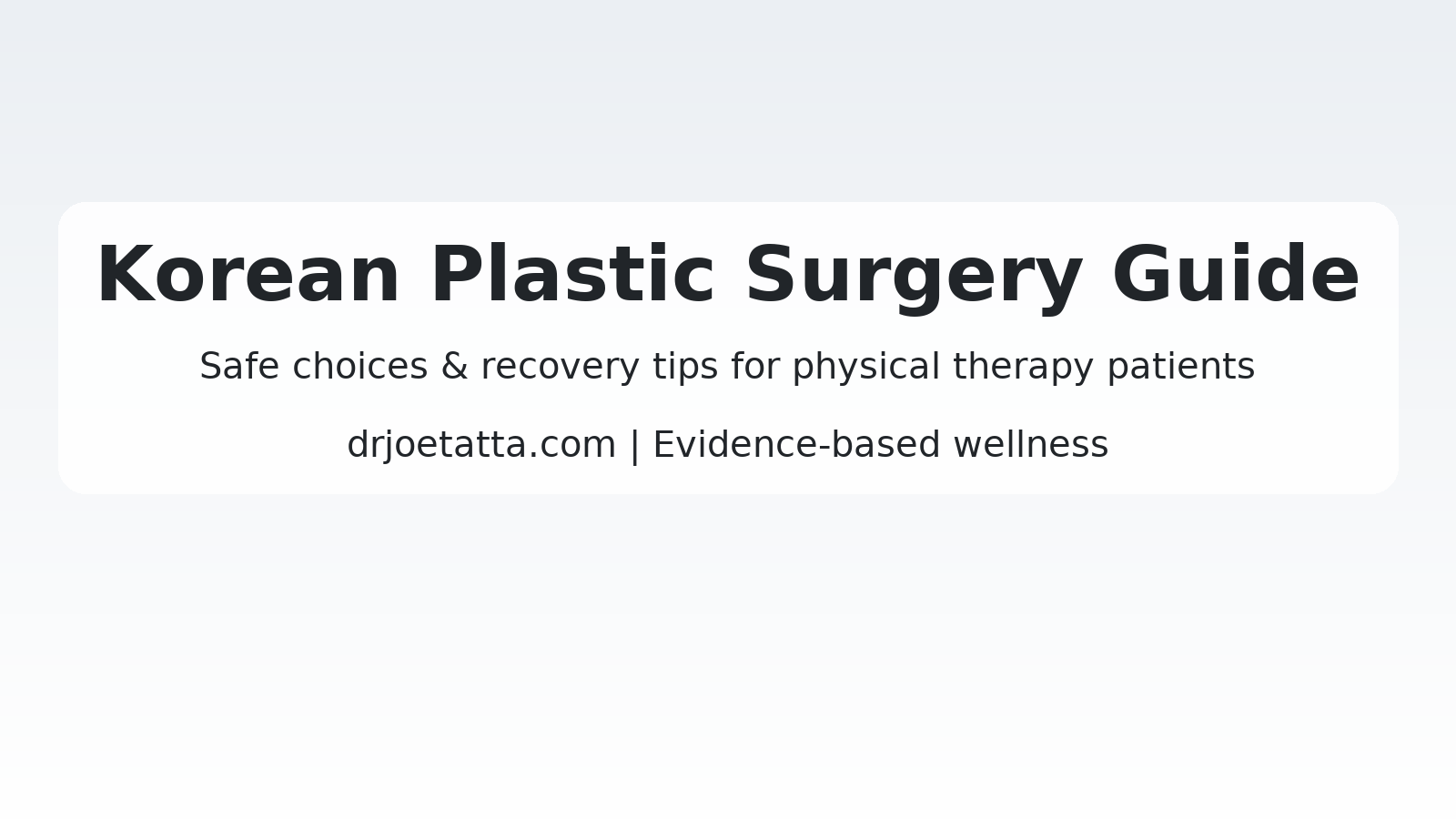Korean plastic surgery has become a serious option for patients who value precision, aesthetics, and coordinated aftercare. Because this article is published on a physical therapy doctor blog (drjoetatta.com), we focus on decisions that protect function first—breathing, chewing, posture, and pain control—while also covering practical steps to integrate surgery with rehabilitation. The aim is simple: help you evaluate whether a trip to Korea is clinically appropriate, financially sensible, and recovery-friendly.
Why patients consider Korean plastic surgery
- High-volume expertise: Surgeons in Seoul routinely perform complex facial and body procedures, which can translate to refined technique and predictable outcomes.
- Team-based care: Many clinics coordinate imaging, anesthesia, and post-op nursing on a single floor, reducing friction during the first forty-eight hours.
- Clear indications for PT readers: Septorhinoplasty for obstructed breathing, scar revision that limits range of motion, or functional eyelid surgery that affects visual fields are common overlaps between surgery and physical therapy goals.
Tip for PT patients: if a structural issue is creating secondary pain or movement limitations, surgery may be medically helpful—but only after conservative care has been tried and documented.
Choosing a clinic with safety in mind
Use a checklist you can verify before booking:
- Board-certified surgeons in plastic surgery or ENT (for rhinoplasty) with procedure-specific case logs.
- In-house monitoring for the first night when general anesthesia is used.
- Airway-smart protocols (particularly for rhinoplasty and jaw work) and written escalation plans.
- English-language consent forms and clear refund/complication policies.
- Structured follow-up via telehealth for suture checks, wound photos, and medication review.
You can explore a reputable English-language overview of procedures and philosophy here: DA Plastic Surgery (English). For patients prioritizing nasal function and aesthetic balance together, review their rhinoplasty approach here: DA Rhinoplasty overview.
(Note: exactly two external in-body links included as requested.)
Procedure categories that intersect with PT goals
- Functional rhinoplasty: Improves nasal airflow while refining aesthetics. Expect internal splints for three to seven days and controlled activity for two weeks.
- Scar release and revision: Can restore glide and range of motion after burns or trauma; PT resumes once incisions are sealed and tensile strength permits gentle loading.
- Jaw (orthognathic or contouring) cases: Chewing mechanics, TMJ loading, and cervical posture are central—plan rehab milestones before surgery.
- Abdominoplasty or diastasis repair: Core function improves when tissue approximation is stable; progressive trunk control work starts after the surgeon clears you.
- Eyelid surgery impacting vision fields: When ptosis or excess skin narrows the superior visual field, balance and gait can improve once swelling resolves.
Travel + rehab timeline (example)
- Week −4 to −2: Medical history review, share PT notes, confirm imaging, and record baseline functional tests (nasal airflow measures, ROM, pain scores).
- Week −1: Land in Seoul, complete in-person consult and labs; bring printed medications list.
- Surgery day (Day 0): Focus on airway, nausea control, and early ambulation.
- Days 1–3: Wound care education; begin gentle walking and diaphragmatic breathing.
- Days 4–7: Splint or tape removal depending on procedure; continue edema management (head elevation, cold-then-cool compress per surgeon guidance).
- Days 8–14: Light mobility; avoid Valsalva and heavy lifting.
- Days 15–28: Fly home if cleared; schedule virtual surgeon check and in-person PT intake to restart progressive loading and posture work.
- Months 2–6: Scar maturation, graded exposure to activity, and final aesthetic settling.
Essential documents to bring
- Operative consent and procedure plan
- Medication list with exact dosages
- Allergies and prior anesthesia notes
- PT evaluation summary with goals that surgery may unlock
- Emergency contact info and travel insurance certificates
Cost and expectation setting
Plan for surgeon fee, anesthesia, facility fee, garments, prescriptions, and at least two to three local follow-up visits. Add airfare, hotel, caretaker support, and the cost of pausing work. Budget honestly so recovery can proceed without financial stress.
How physical therapy fits in
- Prehab: Teach airway-friendly breathing, cervical alignment strategies (post-rhinoplasty or jaw surgery), and gentle lymphatic techniques to reduce swelling.
- Early post-op coaching: Bed mobility, walking cadence, and cough/sneeze strategies to protect incisions and grafts.
- Return-to-function: Progressive isometrics to dynamic loading under surgeon clearance, with objective measures (pain scale, ROM, nasal airflow, bite force where applicable).
